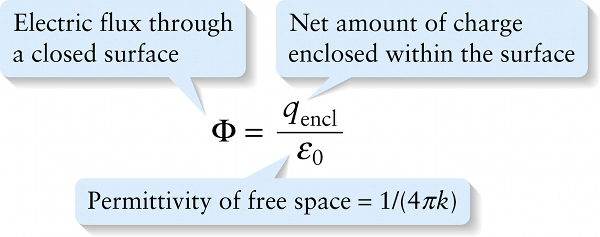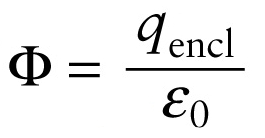Gauss's law (16-9)
Question 1 of 3
Question
Permittivity of free space \(= 1/\left(4\pi k\right)\)
{"title":"Electric flux through a closed surface","description":"Wrong","type":"incorrect","color":"#99CCFF","code":"[{\"shape\":\"poly\",\"coords\":\"82,133\"},{\"shape\":\"rect\",\"coords\":\"10,16,12,16\"},{\"shape\":\"poly\",\"coords\":\"144,22\"},{\"shape\":\"rect\",\"coords\":\"7,39,53,93\"}]"} {"title":"Net amount of charge enclosed within the surface","description":"Incorrect","type":"incorrect","color":"#ffcc00","code":"[{\"shape\":\"rect\",\"coords\":\"136,10,169,59\"}]"} {"title":"Permittivity of free space = 1/(4π k)","description":"Correct!","type":"correct","color":"#333300","code":"[{\"shape\":\"rect\",\"coords\":\"160,83,190,121\"}]"}Review
This relationship is called Gauss’s law after the scientist who first deduced it, the nineteenth-century German mathematician and physicist Carl Friedrich Gauss. In honor of Gauss, a closed surface used to enclose charge in order to apply Gauss’s law is referred to as a Gaussian surface. Equation 16-9 holds true for any Gaussian surface (Figure 16-19), no matter what its shape or size and no matter where the charges are located inside the surface. As we mentioned previously, such surfaces are imaginary: The surface does not need to be made of any physical substance.

